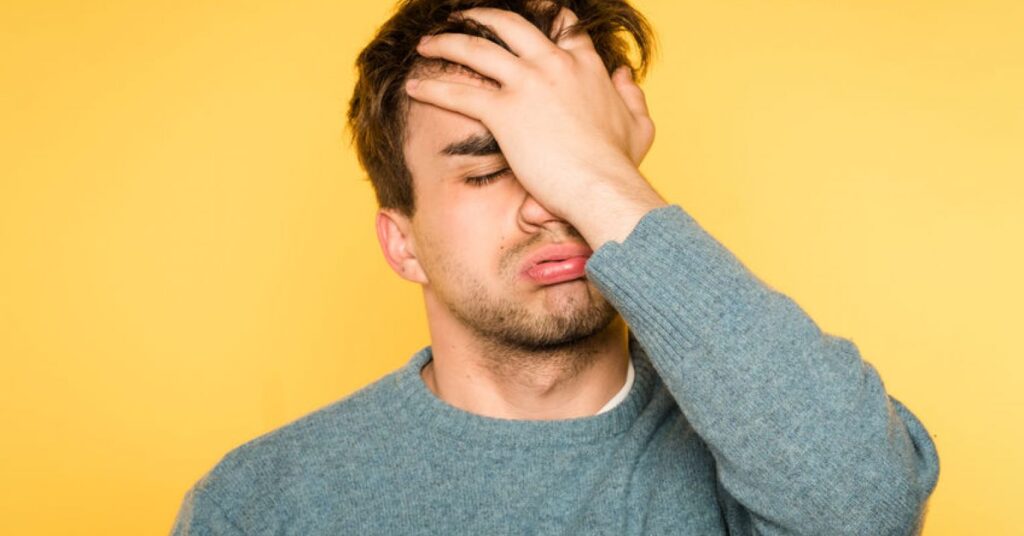There are too many myths about duplicate content for SEO, as there are with a lot of material on the Internet. This blog post tries to refute, squash, and dismiss any of the myths about duplicate content and SEO in 2021 that you may have encountered in previous blog posts. More importantly, we’ll show you the facts about duplicate content so you can address duplicate content issues on your own site. Let’s get right to it without further ado.
So... What is duplicated content?
Duplicate Duplicate Duplicate Duplicate Duplicate Duplicate Duplicate Duplic… I am guessing you you spotted it?
It can be simple to recognise an identical piece of information with the naked eye. It’s even easier for search engines: they trawl through information across domains or within domains, looking for exact matches (or extremely similar – too similar).
If a piece of material appears in multiple places on the internet, Google will notice. The location of such material is determined by the URL on which it is found, according to Google and other search engines. When there is more than one version of the material in more than one location — a second URL – duplicate content issues develop. You’ve undoubtedly come here because there are many misconceptions about the duplicate content penalty.
What are the Duplicate Content Truths?
According to Google’s official standards, duplicate material might be malicious or non-malicious. Let’s start with duplicate stuff that isn’t malicious. On two or more sites, this refers to a text that has revealed a similarity to another version of a block of information, or perhaps an exact match. Don’t be alarmed if this is the situation for you. It’s possible to get a lot of content that’s the same:
Forms of communication
Forums for discussion comments
Blog entries Products (including product descriptions) linked to by several URLs Printer-only webpages
If your text does not meet the above criteria, Google may flag it as harmful, resulting in duplicate content concerns. Don’t be alarmed! We’ll go into how to avoid these perplexing duplication further down. Let’s start with some common misconceptions about duplicate content and how Google and other search engines could view it.

Myths?
"Google will penalise you if you duplicate any part of your website or content"
The above statement is a big misjudgement that a lot of people believe when creating their SEO strategies.
Multiple exact variations of text are occasionally used to trick Google and others in an audacious attempt to boost search engine rankings and traffic. Which is naughty!
To counteract this, Google searches all URLs in search of high-quality information that is fresh, unique, and relevant to the page. However, Google will occasionally uncover duplicate versions of content across multiple URLs and interpret this as an attempt to game their ranking algorithms, especially if the websites in question appear to be owned by the same company.
Google may then alter their indexing and search engine ranking protocol, favouring one of these websites over the others. This could result in your site losing organic rankings and not being indexed (therefore, no one will be able to locate it – it would vanish from all search engine results pages).
To answer the question, “Do you get penalised for duplicating content?”
Yes, but only in the case of wrongdoers. You may be penalised if you try to fool Google by employing several sites to enhance visibility for the same key terms.
When Google indexes the wrong page for your search keyword, it’s a more common problem for most site owners. When you have numerous sites with identical information, Google will often try to rank the most relevant page. However, mistakes sometimes happen, and if they chose the wrong page, you could see a dip in ranks.
For instance, if you have two pages like this:
www.domain.co.uk/page-1
www.domain.co.uk/page-2
If each of them has similar content, Google may have difficulty determining which one you want to rank, so it will choose the one it believes is the most relevant. This can be a problem if page-b is a newer version of the page you want to rank, but Google believes page-a is more relevant.
"A websites content must be completely unique and fresh"
The bulk of search engines look for a wide range of results. Users don’t want to see many domains with the same content listed on the SERPs. When Google scans a domain and discovers a content match to another domain, it will aggregate the URLs into a single group before deciding which URL is the most relevant match to the group.
If you have numerous sites with the same content, Google will only rank one of them, and the other domains will be filtered out. If you’re having problems with duplicate material, you might want to evaluate your marketing strategy, including how your content is structured across your domains.

In practise, having entirely original material across multiple domains is not always achievable. E-commerce sites, for example, can duplicate product and product description versions. It’s not always easy to come up with distinctive product descriptions… especially when they’re all describing the same thing! Using manufacturer product descriptions will not penalise you – contrary to popular belief. You won’t get a warning from Google, but the duplicate content will not provide you a ranking boost because it isn’t unique!
Create a unique product description and URL if you want to make the most of the material.
Our Thoughts: Google Knows Best... Obviously
Follow the three solutions above to keep the proper version of URLs indexed and linked to, signalling to Google which URL to pick up via canonical versions, 301 redirects, and the URL Parameter Handling Tool. As always, Google Search Console can assist you in determining which of your pages are being picked up.
To avoid any potential penalties, take the following steps:
Make sure your internal connection is consistent. Internal links should have the same structure as external links, making it easy to organise your URL and site structure.
Make sure you know how to use your content management system. Learn how to employ canonical and 301 redirects, but also make sure you understand how your site’s content is displayed. Blogs and boilerplate material (e.g., copyright information) may be shown in many formats, which Google interprets as duplicate content.


